Kálmán Kandó was born into a historical noble family of the Reformed denomination in Pest on 8 July 1869. The family bore the Egerfarmos and Stegova praedicatums of nobility (added to English name forms with the de preposition). Several famous artists can be named among the relatives of Kálmán Kandó, including the painter László Kandó (1886–1952) and Miklós Melocco, the active Kossuth Award-winning sculptor.
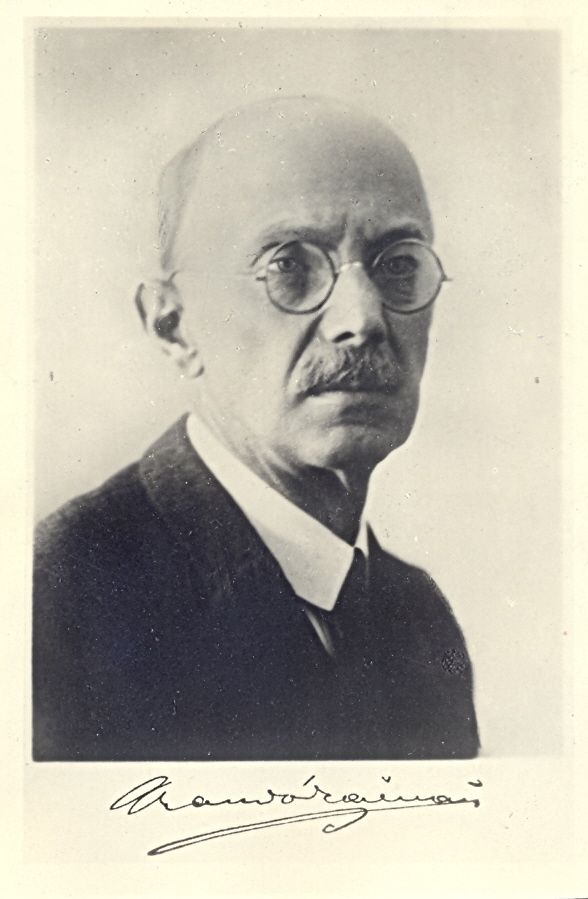
Portrait of Kálmán Kandó
Kandó studied at the Lutheran High School on Deák Square and then at the Pázmány Péter University Training School. After graduation his in 1888 he enrolled at the József Technical University of Budapest. During his university studies, he drew attention to himself by drawing up several plans for utilising electricity.
The Ganz Factory, the foundation of Kandó's success
The predecessor of Ganz Works, which became well-known in Hungary in the second half of the 19th century and world-renowned in the 20th, was founded by the Swiss Abraham Ganz (1814–1867) in Buda, in the northern part of Viziváros in 1844. Even during the founder's life, orders related to railway construction provided a significant part of the company's income. The factory produced its one-hundred-thousandths hard cast wheel. At the time, German-speaking employees formed a majority at the Ganz Factory, including the Bavarian András Mechwart (1834–1907), a mechanical engineer, who worked on new developments from 1859.
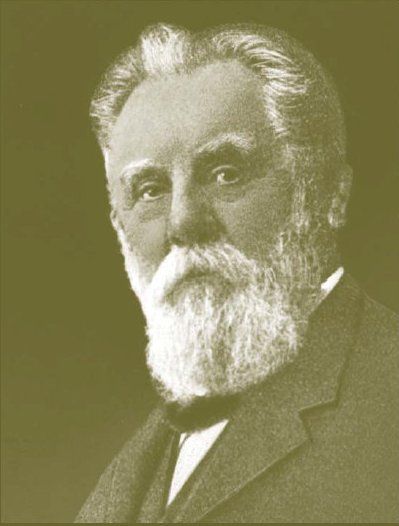
András Mechwart was an employee of Ganz Works
Abraham Ganz died tragically in Pest on 15 December 1867 and left his company to his brothers in Switzerland. The new owners decided to entrust experienced experts with the management of the company. According to the contract concluded on 22 December 1867, the company continued to operate under the name Ganz and Partners and was led by German-speaking members of staff: Antal Eichleiter, Ulrich Keller and Mechwart.
A year and a half later, on 12 April 1869, the company became a joint-stock company with the name Ganz and Partners Iron Foundry and Machine Factory. Eichleiter was appointed Vice President and Mechwart Technical Director. Mechwart went on to become CEO between 1874 and 1899. Ganz suffered significant losses during the global economic crisis in the early 1870s, sliding to the brink of bankruptcy. At this time, Mechwart brought new life to the factory through the production of roller mills with hard-cast, obliquely grooved grinding rolls, his own improvement to the invention.
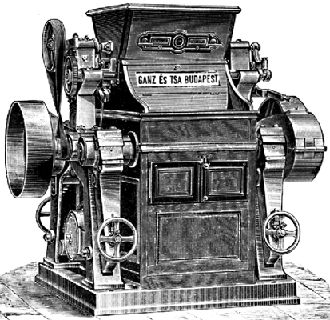
Drawing of the Ganz roller mill
In 1878, András Mechwart founded the electrical department of the Ganz Factory in a shed at 18 Kacsa Street, a few hundred metres from the foundry. As first, the small workshop produced only DC dynamos and arc lamps, which were already known in Europe.
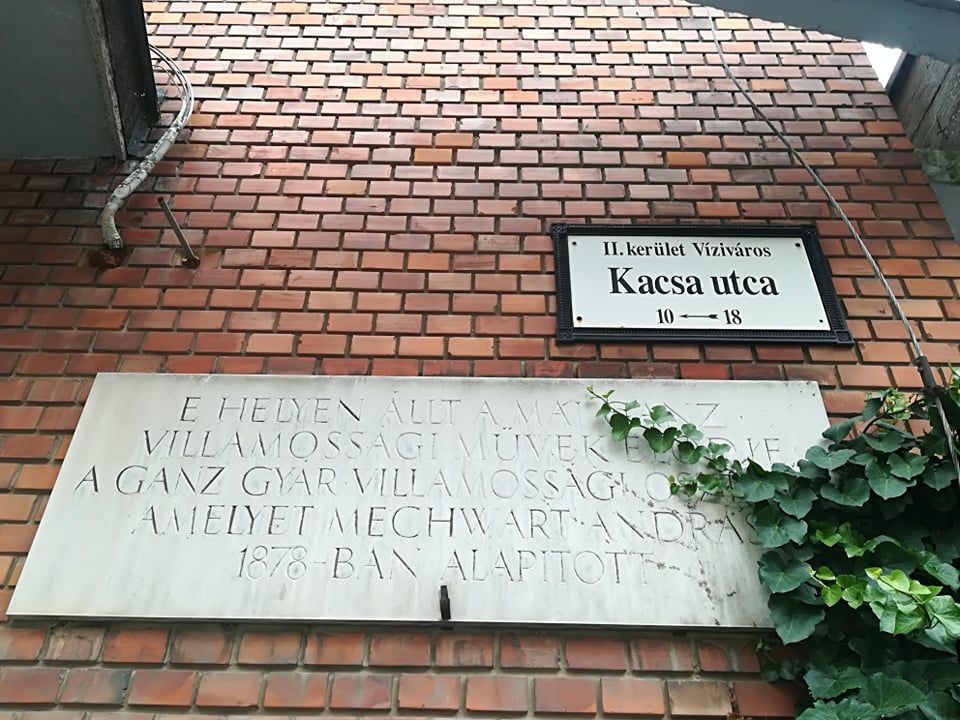
Memorial plaque honouring the Ganz Electrical Department on Kacsa Street (Photo: Máté Millisits/Pestbuda.hu)
A short time later, the factory was connected to the electrical grid and began producing the cast-iron parts needed for dynamo production. Károly Zipernowsky (1853–1942) was charged with leading the electrical department, which developed a self-excited induction generator. The electrical department first moved to a larger building on Fő Street, and then in 1897 to a new complex on Lövőház Street.
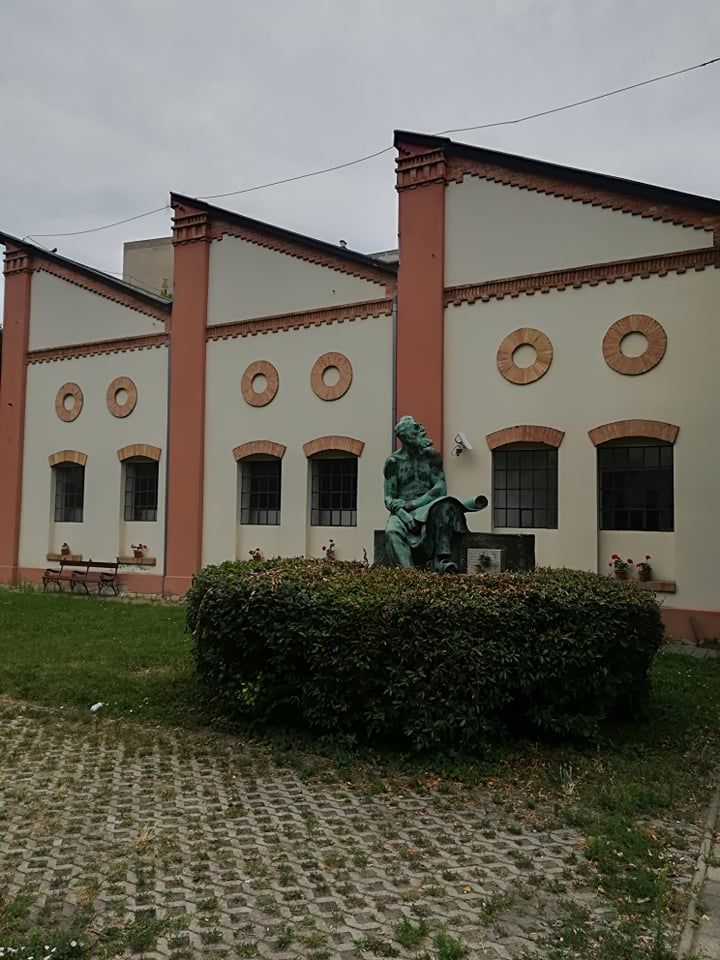
The building of the former Ganz Works Foundry, the present-day Hungarian Museum of Science, Technology and Transportation, Ganz Ábraham Foundry Collection (Photo: Máté Millisits/Pestbuda.hu)
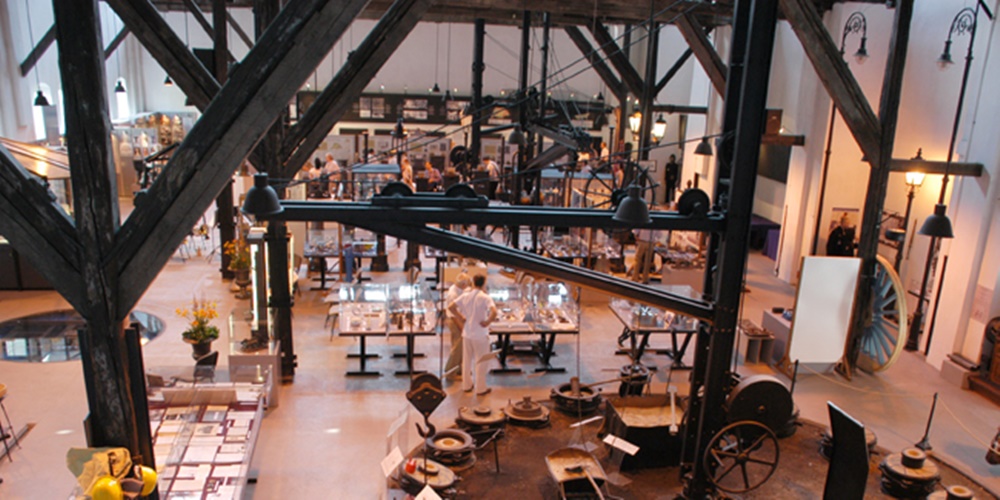
Interior of the museum (Photo: MMKM)
In 1880 Ganz Works bought the factory of the First Hungarian Railway Vehicle and Parts Manufacturing Company which was founded in 1867, on Kőbányai Road. The Ganz factory in Buda was later called the "Central Ganz Factory" An iron foundry, and from 1891 a steel foundry also operated in the railway factory. However, the foundries of the main plant were still the backbones of production. This was also when the production of hard cast canisters, shredders and water turbines began.
In 1896, the central factory employed 200 managers and 650 and the board of directors. In total, Ganz Works employed 700 managers and 6100 workers, including foreign operations. Most products were exported: 80% of goods from the central factory, and 60% of electrical goods ended up abroad.
Kandó, the successful development engineer
After graduating in Mechanical Engineering, Kálmán Kandó worked at Compagnie de Fives-Lille in Paris between 1892 and 1894. He moved back to Hungary following an invitation from András Mechwart, and quickly became the director of the electrical department, taking over from Zipernoszky, who who was offered a position at the Technical University. The first tramline outside of Budapest in Hungary was built in 1895 in Pozsony (present-day Bratislava, Slovakia) as one of Kandó's first projects at Ganz works. The city in the north was followed by the electrification of various tram lines in Budapest, Miskolc and Szabadka (now Subotica, Serbia).
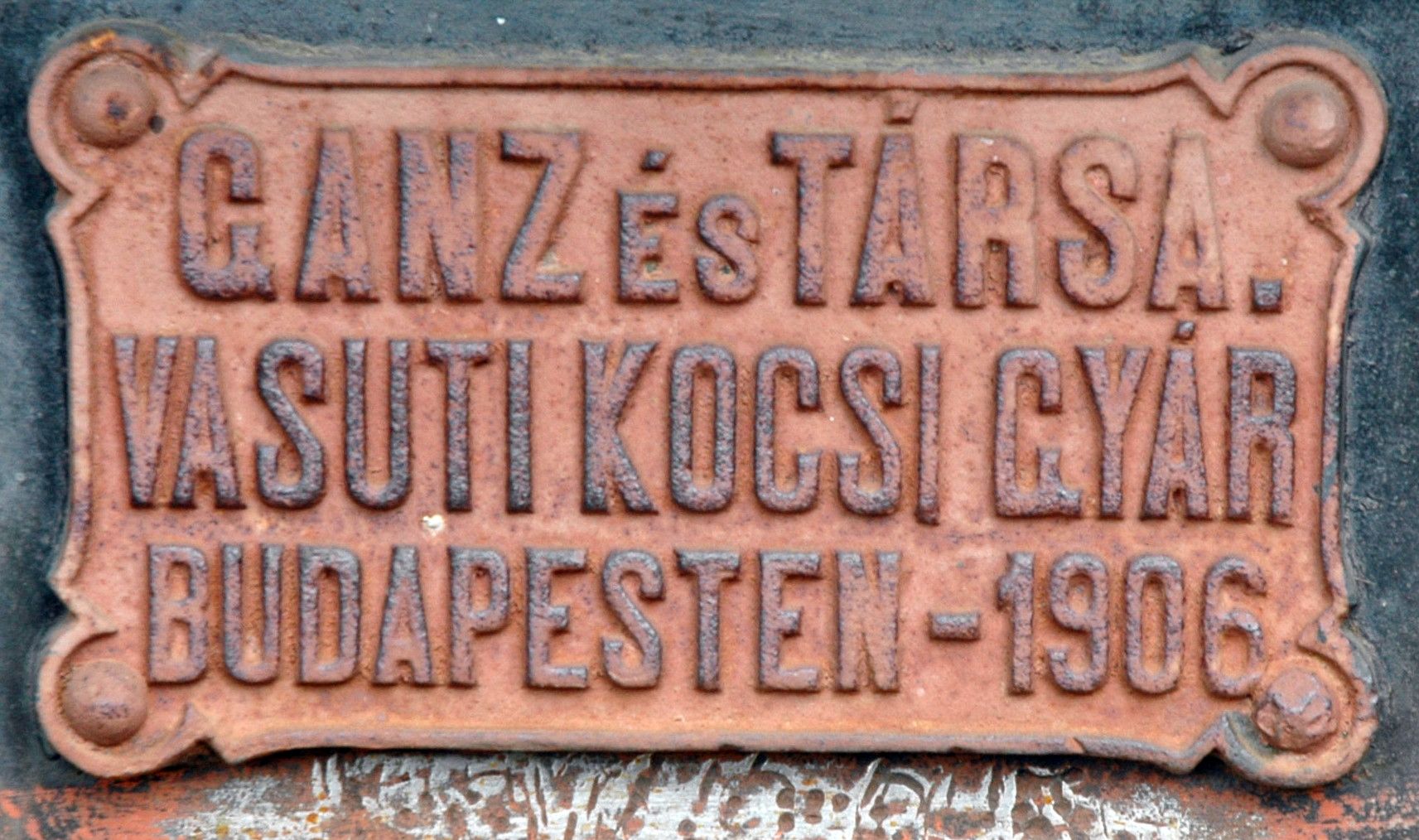
Cast iron marking of the Ganz Works Railway (Photo: Máté Millisits/Pestbuda.hu)
Kandó improved induction motors based on his own designs and calculation method and started using them to power rail vehicles.
The construction of the first three-phase tramway in the small French town of Evian-les-Bains on the shores of Lake Geneva was a major breakthrough project for both Kandó and Ganz Works. Based on the experience he gained working in France, Kandó built the first AC train line between 1898 and 1902, near Lake Como in Italy. The Valtellina railway was based on the 3000 Volt high-voltage 15 Hz three-phase system and proved the advantages of electric power over the use of steam locomotives for the first time. The work in Italy, although a significant professional success for Ganz Works, resulted in financial losses due to the cost of construction.
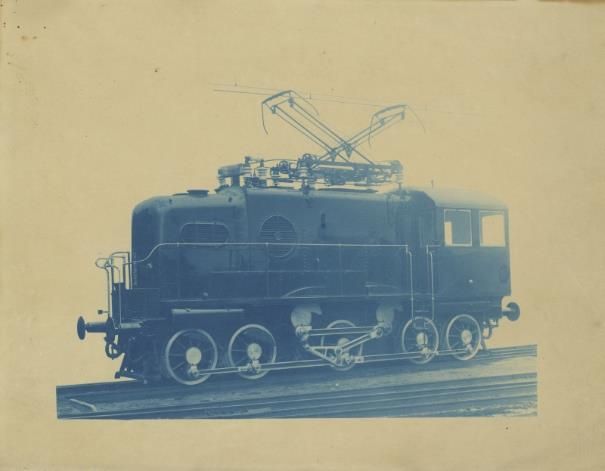
Electric locomotive in 1923
Through Ganz Works, Hungary was a powerhouse of generator construction. Ganz began producing turbo generators ahead of many international factories.
At the dawn of the 20th century, Ganz Works, which had become a massive company, was facing a major transformation. The electrical department was separated from the parent factory and operated as an independent joint-stock company from 1906 to 1929, after which it was again incorporated into Ganz Works for a longer period. Kálmán Kandó felt neglected by the new leadership of the company, and thus accepted an offer from the Italian government in 1905 after ten years with the firm.
Based on the operating results of the Valtellina Railway, the Italian government established Società Italiana Westinghouse with US capital and established a locomotive factory in Vado Liguré for the production of Kandó locomotives. As the technical manager of the factory, Kandó electrified the Giovi line. The locomotives designed for the line were record holders in terms of operational safety, speed, performance, weight utilisation for decades.
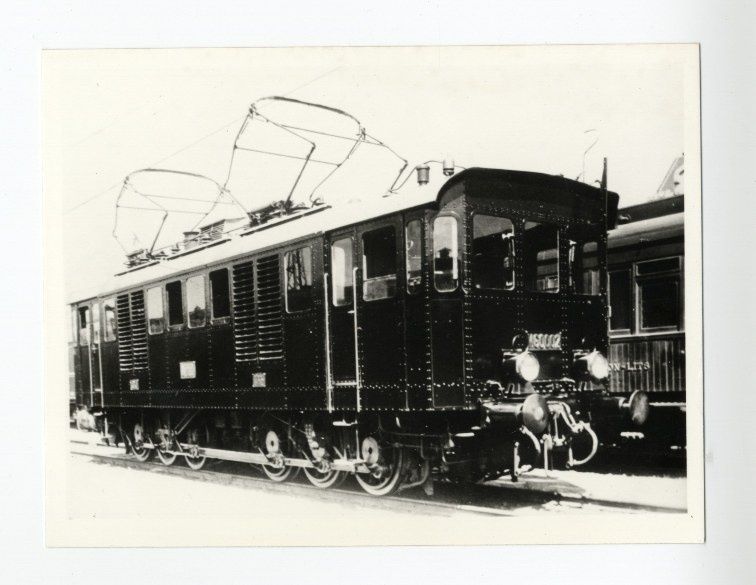
The V 40 Kandó locomotive (Photo: MMKM)
Kandó was forced out of the country by Italy's declaration of war on the Austro-Hungarian Monarchy on 23 May 1915. On his return, he was conscripted and assigned to coordinate the coal supply of railways. After two years of military service, he was exempted from conscription at the request of the Ganz factory. Kandó joined the Ganz factory again in 1917 as technical director and served as CEO from 1918 to 1922.

A V 40 Kandó locomotive at Keleti railway station entering service (Photo: MMKM)
Kandó Kálmán started the development of a second railway electrification system in 1917, which allowed the direct application of the 50 Hz public electrical grid for railway traction. The new system was trialled on the mainline between Nyugati Railway Station and Alag on 31 October 1923. MÁV decided on the electrification of the Budapest-Hegyeshalom railway mainline in 1929 based on the results of this test. Kandó Kálmán designed the electric locomotive that later came to bear his name for this project.
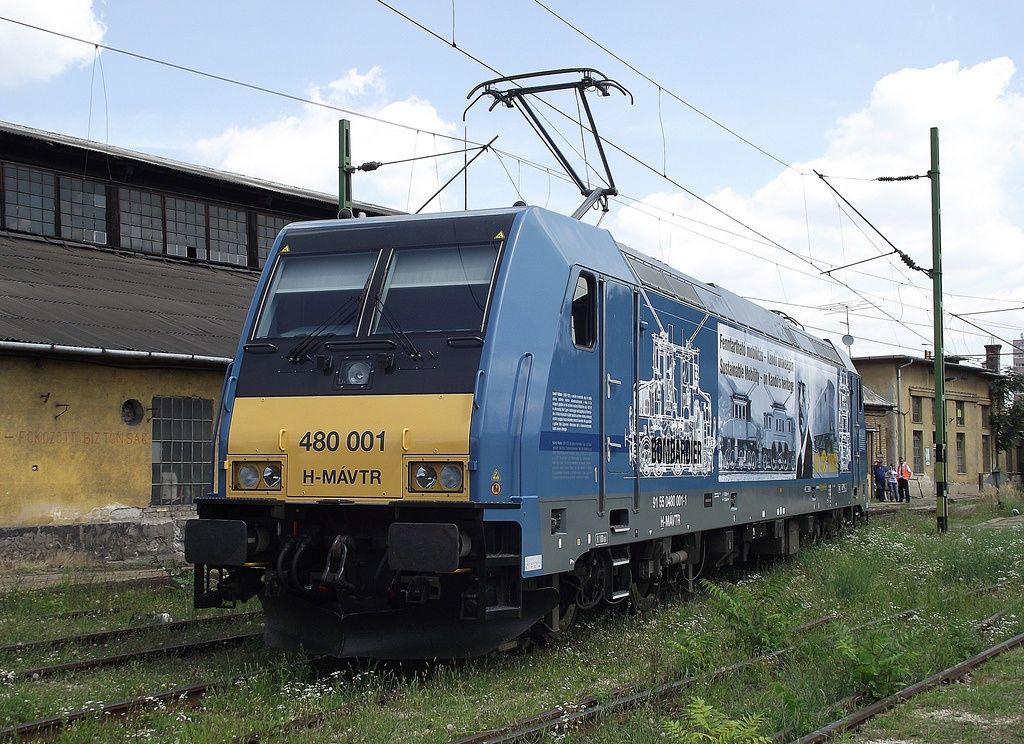
MÁVTR 480 locomotive
In the early 1920s, Kálmán Kandó received a lump sum settlement of the royalties due from his developments in Italy, which were withheld during to the First World War. He invested his wealth into a mining company in Borsod. Working with the mine's owners, he was able to provide coal aid to several social groups.
As a presbyter of the Reformed Church in Budapest, he also provided support to the poor members of the congregation that lived in Angyalföld.
In 1921 the Hungarian Academy of Sciences honoured him with the Wahrmann Award. In 1922, the József Technical University of Budapest awarded Kandó an honorary doctorate in the technical sciences in recognition of his outstanding merits in the field of mechanical engineering and electric technology. He was elected a corresponding member of the Hungarian Academy of Sciences in 1927.
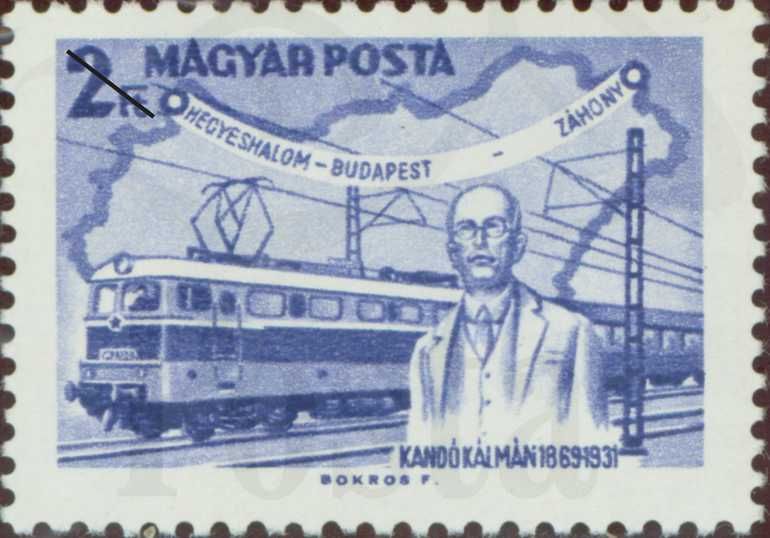
Kandó stamp, 1968
He was one of the first to receive a Corvin Chain award in 1930. He died of a heart attack in Budapest on 13 January 1931.
Budapest contributed to his funeral held on 16 January 1931 by providing an honorary grave in Kerepesi Cemetery. A large crowd accompanied his body to its final resting place in the National Cemetary. László Ravasz, bishop of the Reformed Danubian Church District spoke at the ceremony, not only comforting the masses through the words of the Scripture but highlighting the extraordinary talents given to the deceased by God. The sculptor Ernő Müller carved the coat of arms of the Kandó family onto the narrow tomb of plot 46.
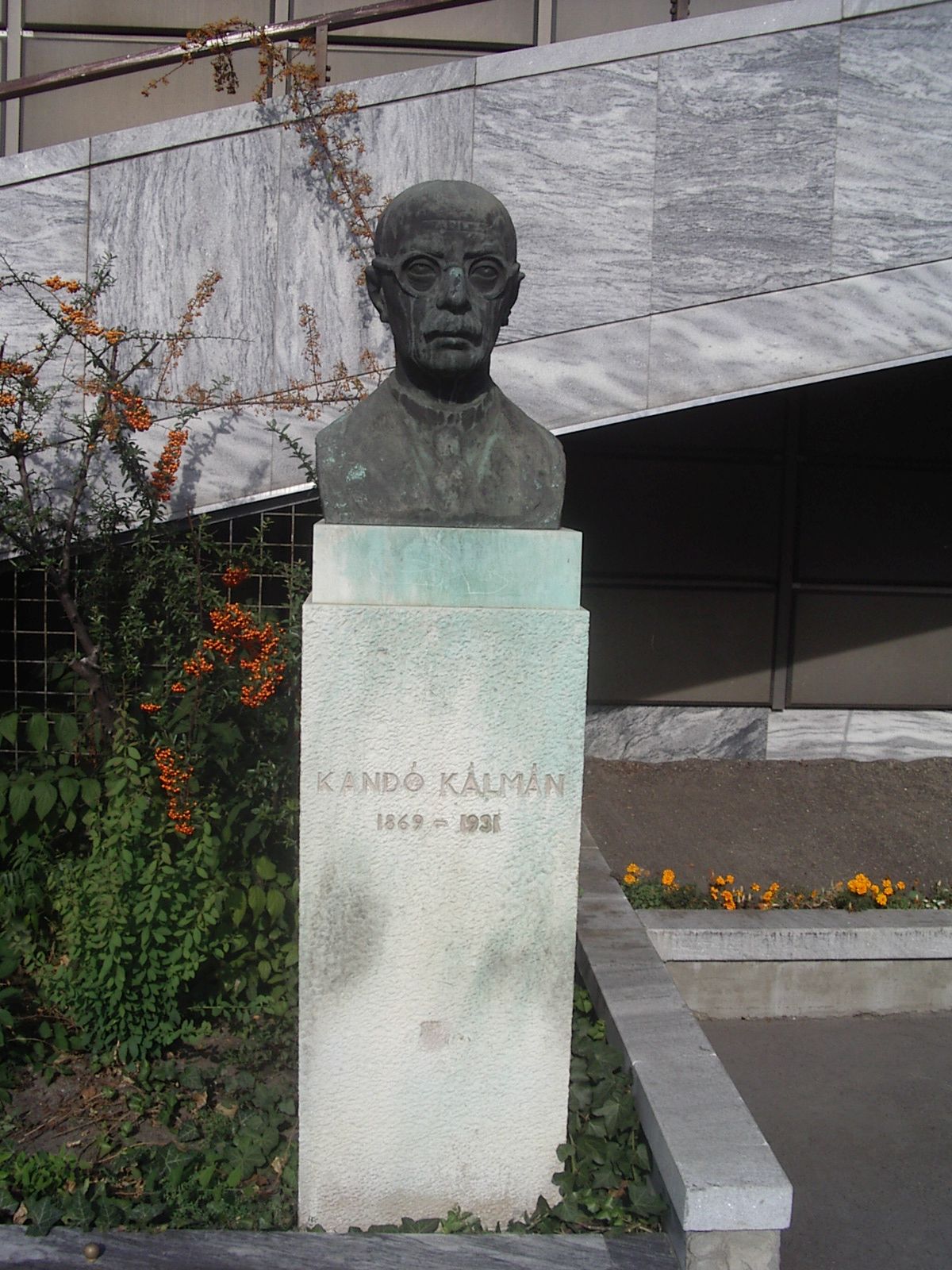
Kálmán Kandó's bust stood in front of the Transport Museum between 196 and 2016, sculptor: János Sóváry (Photo: Máté Millisits/Pestbuda.hu)
Over the past nine decades, several memorials to Kálmán Kandó have been erected in Budapest. A street was named after him near the buildings that were once the Ganz Central Factory in Viziváros and a memorial plaque unveiled in his honour. The Faculty of Electrical Engineering at the University of Óbuda also bears his name. On the fiftieth anniversary of the completion of the electrification of the Budapest-Hegyeshalom line, a relief by József Szommer was unveiled in the side hall of Keleti Railway Station in 1982. The portrait of Kálmán Kandó was cast in bronze and placed on the plaque. In 2011, on the eightieth anniversary of Kandó's death, MÁV Start Zrt. entered a locomotive honouring the engineer's life work into service.
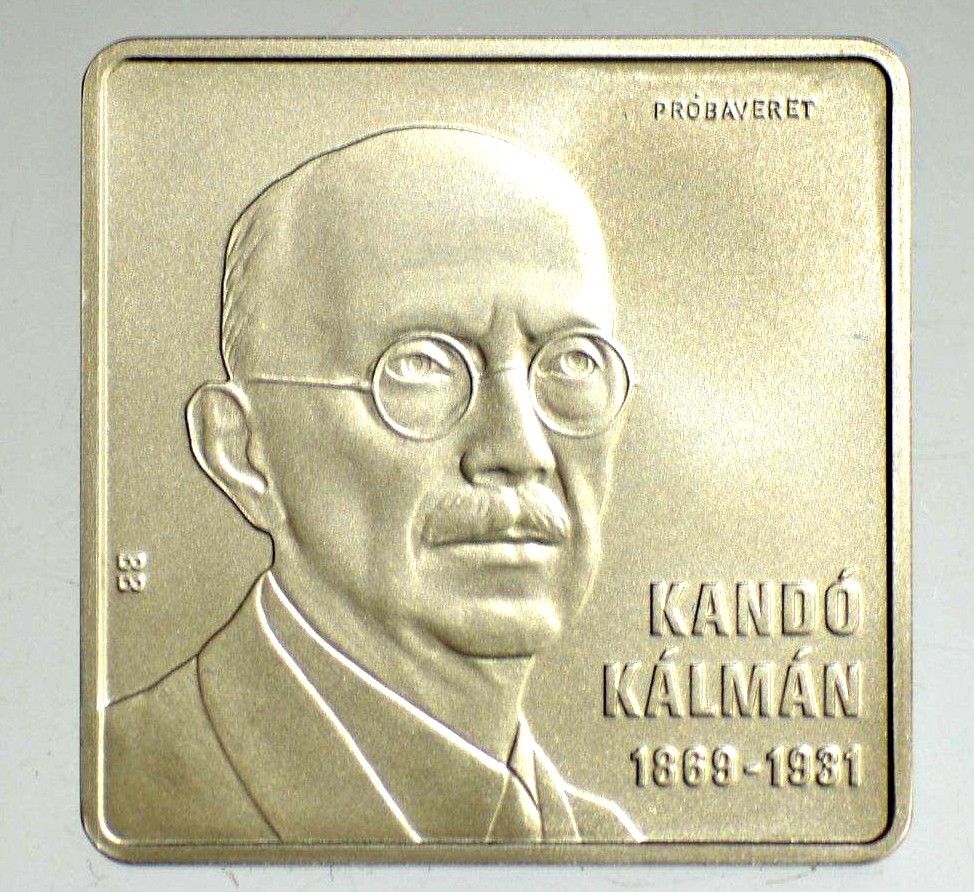
Kandó Kálmán commemorative medal.
The Central Bank of Hungary released a Kandó medal, designed by the goldsmith Balázs Bitó, in 2019. The Hungarian Museum of Technology, Science and Transport and its sub-museums serve as the main collections that safeguard the artefacts connected to Kandó's oeuvre.
Cover photo: The V 40 Kandó locomotive entering service at Keleti Railway Station (Photo: MMKM)

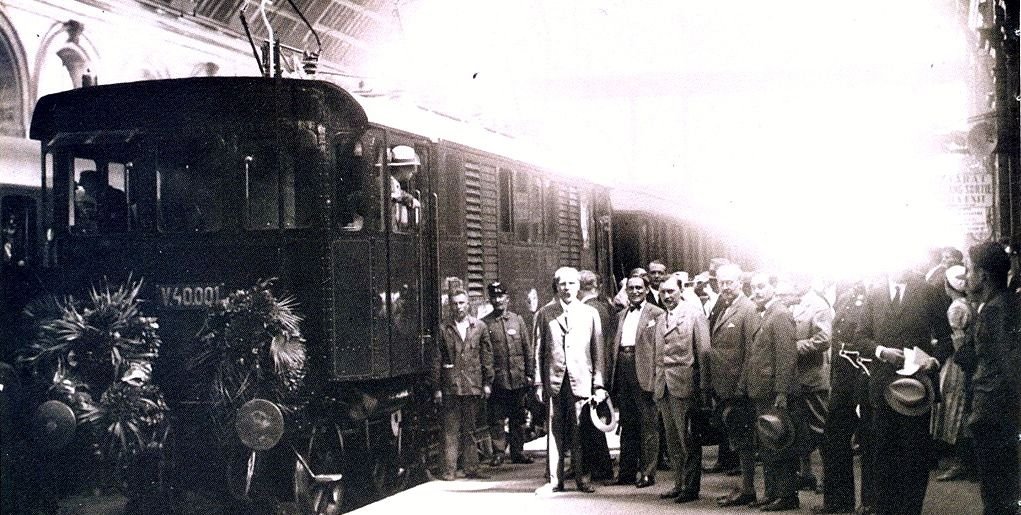

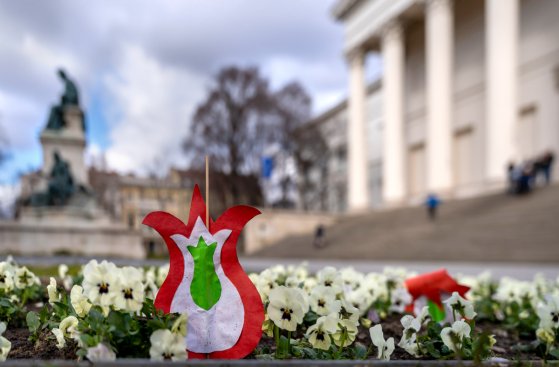

































Hozzászólások
Log in or register to comment!
Login Registration